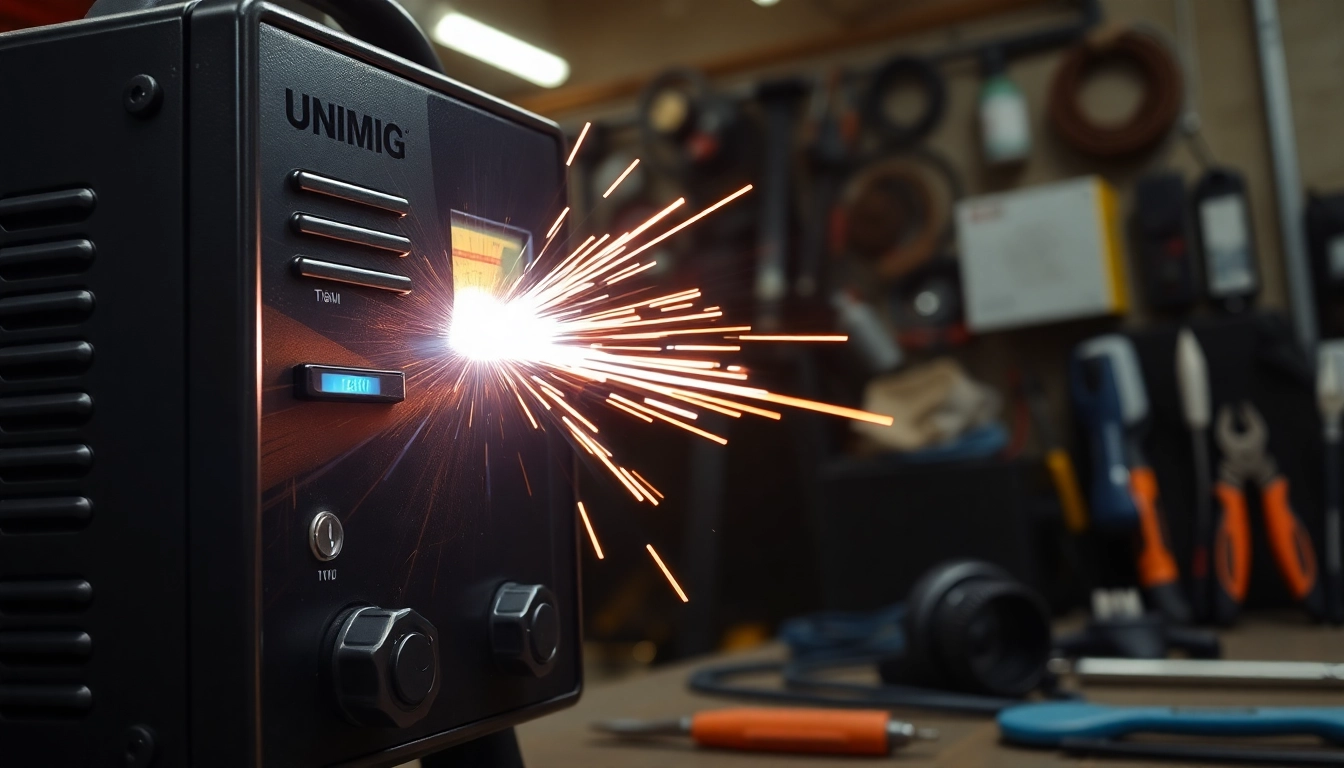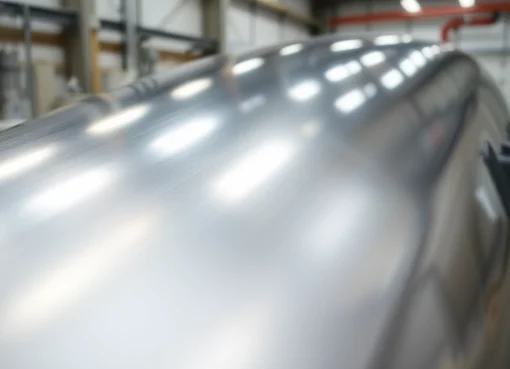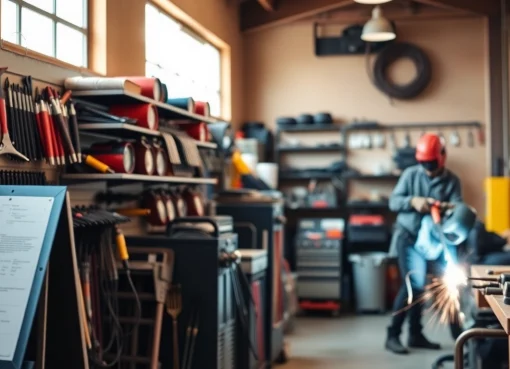Achieve Precision with Unimig TIG Welders: A Comprehensive Guide

Introduction to Unimig TIG Welders
TIG welding, known for its precision and adaptability, has become a popular choice across various industries. Among the numerous products available in the welding equipment market, unimig tig welders stand out for their quality and performance. This article will delve into Unimig TIG welders, covering their features, applications, and maintenance, to help you make an informed decision when selecting your welding equipment.
What is a TIG Welder?
TIG welding, also known as Gas Tungsten Arc Welding (GTAW), employs a non-consumable tungsten electrode to create a weld. The process uses shielding gas—typically argon or helium—to protect the weld pool from oxidation and contamination. This method allows for a high level of control over the welding arc, making it ideal for thin materials and critical applications where precision is paramount.
Overview of Unimig TIG Welder Models
Unimig offers a range of TIG welders designed for various applications, from hobbyists to professional welders. Notable models include the Razor 200 AC/DC and Viper 180 AC/DC, each delivering distinctive functionalities suited for different welding tasks. The Razor models are primarily designed for heavy-duty applications, while the Viper series caters to both home projects and industrial uses.
Key Benefits of Using Unimig TIG Welders
Unimig TIG welders come with a multitude of benefits, including:
- Versatility: Able to weld various materials including aluminum, stainless steel, and brass.
- Precision: They offer greater control of heat, which is essential for thin materials.
- Compact Design: Many models are lightweight and portable, making them suitable for both shop and field work.
- Advanced Features: Users benefit from digital displays, adjustable settings, and advanced features like pulse welding.
Understanding the Features of Unimig TIG Welders
Power and Performance Specifications
Unimig TIG welders typically feature a wide range of output power, allowing users to work with both thin and thick materials. For instance, the Razor 200 AC/DC provides output up to 200 Amps, making it capable of tackling heavy-duty welding applications. Moreover, these welders offer different voltage settings to support a variety of materials and thicknesses, ensuring versatility in your welding projects.
Control and User Interface Explained
Modern Unimig TIG welders are equipped with intuitive digital interfaces that simplify the welding process. Features such as digital amperage displays, current adjustment dials, and pre-set function controls allow users to set their preferred parameters quickly. Additionally, some models include memory functions that remember previous settings for repeatability on future welding jobs.
Durability and Build Quality Insights
Durability is a critical consideration in welding equipment. Unimig TIG welders are constructed with robust materials designed to withstand the rigors of industrial environments. Features include high-quality casings, durable cables, and resilient components that ensure long-term performance even under demanding conditions. Customers often report exceptional longevity and reliability from their Unimig machines.
Applications of Unimig TIG Welders
Common Industries Utilizing TIG Welding
TIG welding is prevalent across various industries due to its versatility and precision. Industries that frequently utilize Unimig TIG welders include:
- Aerospace: For welding critical components where precision is crucial.
- Automotive: Used in vehicle repairs and custom builds.
- Manufacturing: Perfect for fabricating machinery and tools.
- Art and Sculpture: Artists utilize TIG welding for intricate metalwork and sculptures.
Material Compatibility with Unimig Equipment
Unimig TIG welders excel in welding a variety of materials. They can seamlessly handle:
- Aluminum and Aluminum Alloys
- Stainless Steel
- Chrome Moly Steel
- Bronze and Copper Alloys
This compatibility makes them an exceptional choice for professionals needing to work with multiple material types without changing equipment.
Case Studies of Successful Welding Projects
Several industries have seen successful applications of Unimig TIG welders. For instance, a local automotive workshop utilized the Razor 200 for a high-performance vehicle restoration, achieving impeccable welds on challenging aluminum components. Similarly, a metal sculpture artist employed a Viper 180 to create delicate pieces that required fine control over the heat input—showcasing just how versatile and capable these welders are in real-world scenarios.
Choosing the Right Unimig TIG Welder for Your Needs
Comparing Unimig Viper and Razor Models
When selecting a Unimig TIG welder, knowing the differences between the Viper and Razor models is essential. The Viper series is designed more for light to medium hobbyist use, providing excellent performance for household projects and light industrial applications, whereas the Razor series caters to heavy-duty welding requirements and is better suited for professional environments. Evaluate your specific needs based on usage frequency, material types, and thickness to make the right choice.
Tips for Selecting the Best Welder
Here are some practical tips to consider when choosing a Unimig TIG welder:
- Assess the materials you will be welding, including their type and thickness.
- Consider the welder’s output power and adjustability.
- Look for user-friendly controls and interfaces, especially if you are starting out.
- Evaluate necessary accessories and features, such as foot pedals for increased control.
Understanding Budget Considerations
Investment in a high-quality TIG welder is a significant decision. While Unimig models can vary in price from economy to high-end, it’s crucial to consider quality and features besides just the cost. Budget for potential accessories and consumables, such as tungsten electrodes and filler rods, which can add to the overall expense.
Maintenance and Troubleshooting Tips for Unimig TIG Welders
Routine Maintenance Best Practices
To ensure your Unimig TIG welder operates effectively, implementing a routine maintenance schedule is vital:
- Regularly inspect and clean the torch and cable connections.
- Check for wear and tear on consumable parts, replacing them as necessary.
- Keep the machine free from dust and debris to prevent overheating.
- Periodically review settings and calibration to maintain precision.
Common Issues and Their Solutions
Like any machinery, TIG welders can encounter issues. Common problems include:
- Inconsistent arc: Check electrode alignment and ensure proper gas flow.
- Overheating: Ensure the welder isn’t running for extended periods without breaks.
- Inadequate penetration: Adjust the amperage or travel speed, or consider the tungsten size.
Most issues can often be resolved without professional help by troubleshooting common problems.
Maximizing Lifespan of Your Unimig TIG Welder
Maintaining your welder’s lifespan goes beyond regular maintenance. Ensure that:
- Store your welder in a dry, dust-free environment.
- Utilize your machine within the specified limits regarding power and material thickness.
- Conduct periodic professional servicing to catch potential issues before they escalate.



Leave a Comment